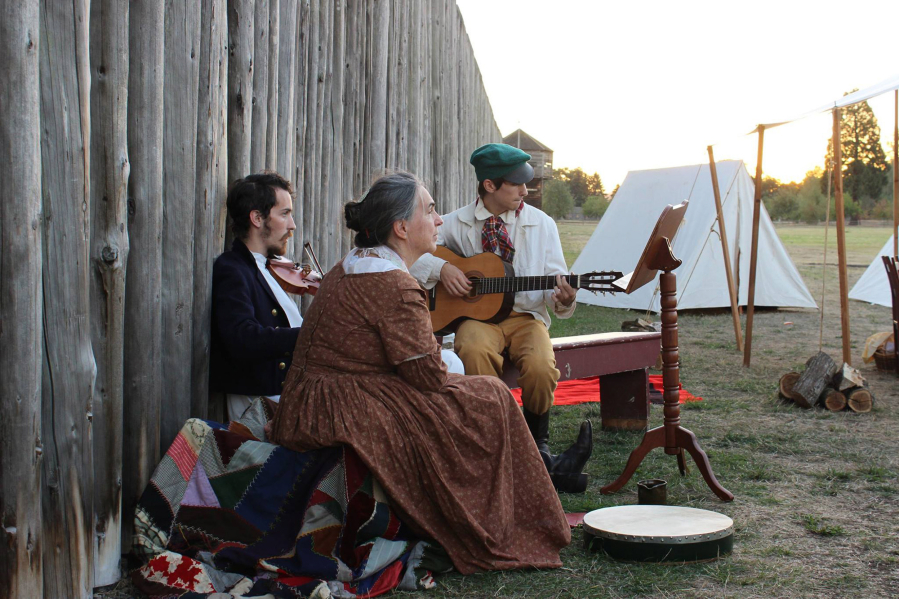This year’s version of Campfires & Candlelight will represent an even more fiery setting at Fort Vancouver: the night in 1844 when the place almost burned down.
The free event is the largest living history event of the year at Fort Vancouver National Historic Site, and Saturday marks the debut of a theme that is still timely.
Inside the reconstructed fort, re-enactors will illustrate the night of Sept. 26, 1844, when a massive wildfire came within 300 feet of the fort’s walls.
It’s an exciting — and still relevant — moment in the site’s history, Bob Cromwell, acting chief ranger, said in a news release.
The event begins at 4 p.m. with a Timeline of History. Several camps will be set up to re-enact more than 100 years of history, including World War II, World War I, the Indian Wars, the Civil War, the Oregon Trail and the Fort Vancouver Village.
When the fort’s gates open at 5 p.m., visitors will be able to interact with volunteers portraying specific characters who were present on that night: the clerks, tradesmen, women and children who lived inside the fort and spent the evening anxiously awaiting their fate.
Over the summer of 1844, Hudson’s Bay Company employees at Fort Vancouver recorded very little rain. On Sept. 24, 1844, a fire broke out to the east of Fort Vancouver. Chief trader James Douglas wrote that “a dense cloud of smoke, indicating the existence of an extensive fire, was observed rising from the banks of the River at some distance to the eastward.”
On Sept. 25, 1844, Hudson’s Bay Company employees fought to extinguish the fire. Thanks to extensive trenching and water carted up from the river, by the end of the day Douglas believed the fire was “completely subdued.”
The following day, however, “a thick column of smoke” was spotted coming from the plain to the northeast of the fort, approximately 6 miles away.
Douglas rode to the fire line and determined that the fort would be “assailed at all points” by this new fire. He had men position casks of water around several outbuildings near the fort and stationed employees to protect those structures, including barns, the saw mill and the flour mill.
That night, Douglas wrote that “having thus made the best preparations in our power, to meet the assault of (the fire), a period of the most painful suspense followed, while we listened, in perfect impotence, to its frightful ravages in the forest, which came upon the ear like the beating of the distant ocean.”
By 8:30 p.m., the fire was about 2 1/2 miles away from the fort. By midnight, the fire had reached the fields to the east of the fort, where it threatened the company’s pastures, cattle, sheep and horses. In the early morning hours of Sept. 27, the fort’s firefighters were reinforced by a group of men led by Chief Kiesno. (He was married to Ilchee, whose sculpture is along Vancouver’s riverfront trail.)
The fire came within 300 feet of the fort, consuming five barns in the Great Meadow — an area that now is across the street from Pearson Air Museum. On Saturday, Sept. 28, 1844, the fire was “gradually expiring for want of fuel,” Douglas wrote.
The 11 previous Campfire & Candlelight programs had focused on another significant September event at Fort Vancouver. In 1846, the Hudson’s Bay Company organized a relief effort for American sailors aboard the U.S.S. Shark, a Navy schooner that wrecked at the mouth of the Columbia River.




